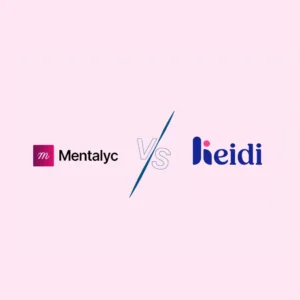Ethics in counseling refers to the standards and principles that govern the professional conduct of therapists. Ethics refers to the system of moral principles which guide human behaviour. It outlines what is right, what is fair, what is just, and what is good.
Ethics in counseling are not mere rules, as a therapeutic space is all about a healthy relationship. Ethics in this space are about protecting clients, honouring their autonomy, and staying grounded in integrity especially when things get murky. For many mental health professionals, ethical dilemmas do not arrive with flashing warning signs. They show up quietly as these ethical concerns persist in grey areas given the nature of human complexities, and in moments where care must guide action.
The American Counseling Association (ACA) outlines six guiding ethical principles: autonomy, nonmaleficence, beneficence, justice, fidelity, and veracity. Applying these ethical principles in practice is not always simple and straightforward.
Corey (1996) briefly outlines five principles in which therapeutic boundaries are based upon:
a) Beneficence – a counsellor takes responsibility for promoting what is good for the client with the expectation that the client will benefit from the counseling sessions.
b) Nonmaleficence – essentially means “doing no harm”. The counsellor must avoid at all times any activities or situations with the client that could cause a conflict of interest.
c) Autonomy – the counsellor’s responsibility to encourage client independent thinking and decision-making, and to deter all forms of client dependency.
d) Justice – the counsellor’s commitment to provide an equal and fair service to all their clients regardless of age, gender, race, ethnicity, culture, disability and socio-economic status.
e) Fidelity – a counsellor’s responsibility to be honest with clients and honouring their commitment to the client’s progress.
Common Ethical Issues in Counseling
Let us walk through some common ethical issues in counseling – unpacking what they look like in practice, and how to navigate them with thoughtfulness.
1. Confidentiality and Its Limits
Confidentiality is the bedrock to trust in the therapeutic relationship. But every counsellor eventually encounters situations where keeping things confidential may not be possible — or even ethical. For example – when a teenage client reveals they’re thinking about self-harm. They might request the therapist not to tell anyone. The therapist must decide: how imminent is the risk? Is it reportable? Does the parent have a right to know?
Considerations:
- A therapist must be aware of the local laws regarding the duty to warn and protect.
- A therapist must discuss limits of confidentiality clearly during informed consent with their clients
- When possible, involve the client in the decision to disclose.
However, the challenge often lies in the “in-between”, when the risk isn’t immediate but still concerning. In these moments, ethical decision-making models and supervision can be invaluable.
2. Informed Consent
Informed consent is both a legal requirement and an ethical obligation. It ensures that clients understand what therapy entails, including the process, risks, boundaries, methods, and limits to confidentiality. Informed consent is not just the form we therapists tell the client to sign at the start of therapy. It’s an ongoing process. It ensures clients understand what therapy involves — including the risks, boundaries, methods, and confidentiality so that they can engage freely and knowingly.
For example – A client begins therapy and signs a consent form which highlights a 24-hour cancellation policy with a fee for missed sessions. A few weeks later, the therapist cancels a session just 30 minutes before the scheduled time due to a personal emergency on their end. When the client later cancels a session due to work, the therapist brings up the cancellation fee. The client feels confused and frustrated with this. The issue here isn’t just about fairness — it’s about clarity. The consent process should include discussion around how policies apply in both directions and what clients can expect in such scenarios.
Considerations:
- Informed consent should be revisited when there are changes in methods, goals, or policies.
- A therapist must use accessible, non-jargon language to explain procedures, including billing and cancellation rules. Consider cultural, developmental, and cognitive factors when conveying information.
- Clients must know they can pause, decline, ask questions, or revisit agreements at any point.
- Consent includes transparent discussions about power, fairness, and expectations, including what happens when the therapist cancels.
3. Dual Relationships and Boundary Blurring
Dual relationships is when a therapist engages with a client in more than one role – such as being both a therapist and a neighbour, or let us say a colleague’s relative. For instance, a therapist and a client continue to meet for coffee outside of the sessions. The relationship between them then involves not just the professional dimension but also personal and social dimensions. These overlapping roles between the two of them can affect the therapist’s objectivity, create conflicts of interest, and confuse the client and/therapist. While not all dual relationships are unethical, they must be assessed for potential harm and any kind of power imbalance.
Example: A therapist realises that her new client is the cousin of her child’s best friend. They’re likely to see each other at school events.
Considerations:
- Dual relationships don’t automatically become unethical, but they increase the risk of harm or bias. I had a client’s distant relative reach out to me for therapy. I was unsure if it would be alright for me to take this up. I checked in with my existing client regarding potential conflict of interest and once they gave a green light to this is when I took this up.
- The therapist must reflect on whether objectivity or boundaries might be compromised.
- If unavoidable, document the rationale and steps taken to mitigate risks.
The golden rule here would be if as a therapist we are in doubt – we must consult. Supervision can help therapists assess if a dual relationship is manageable or a potential breach waiting to happen.
4. Competence and Scope of Practice
Competence is about a therapist’s ability to offer safe and effective services based on their training and experience. Ethical practice requires that therapists would also be self aware of the limits of their skills and refer clients when issues fall outside their scope. This also includes a commitment to ongoing learning and self-reflection to maintain and enhance professional effectiveness over time. Example: A therapist with no trauma training but feels bad for turning away a client with complex PTSD and dissociative symptoms who asks to continue therapy.
Considerations:
- It is ethical to refer when a client’s needs exceed a therapist’s scope.
- Therapists should pursue continuing education to stay competent.
- Practising humility and honesty is better than risking harm through guesswork.
Competence is not just about knowledge, it’s about knowing what we don’t know and being willing to seek help or hand over the reins.
5. Managing Therapist Self-Disclosure
Self-disclosure can either strengthen rapport or derail it. If done at the right time and in right quantities, it can humanise the therapist and validate the client. If done poorly, it can shift the focus or blur boundaries. Example: A therapist shares their own experience with grief to support a grieving client. But later, the client begins checking in on the therapist’s feelings.
Considerations:
- Disclosures should always be in service of the client’s growth.
- Therapists must monitor how disclosures affect the therapeutic relationship. Timing, intent, and client response all matter.
Sometimes, silence is more powerful than similarity. Clients need us to hold space, not share the stage.
6. Working Online and Social Media Dilemmas
Therapy has moved online and so have many ethical challenges. The digital world invites questions about privacy, professionalism, and boundaries that traditional guidelines may not fully address.
Example: A client follows their therapist’s professional Instagram account and begins commenting on posts. The therapist feels unsure about how or whether to respond.
Considerations:
- Therapists should have clear social media policies (preferably shared at intake).
- Be mindful of what is posted — anything online is public, permanent, and can be misinterpreted.
- Avoid searching for clients or accepting friend/follow requests unless ethically justified.
Different guidelines (APA, BACP, HCPC) offer varying levels of detail. Where explicit rules are lacking, the therapist’s judgment, reflexivity, and awareness of power dynamics become the ethical backbone.
7. Termination
Termination is an ethical way of ending the therapeutic relationship. Whether this termination is planned or abrupt – an ending typically requires some degree of planning, preparation and reflection. Termination must ensure that the client has closure, they understand why therapy is ending, and if necessary they receive appropriate referrals. Poorly managed endings can feel like abandonment and may undo the therapeutic progress for the client.
For one my client’s termination session – we kept it open for any reflections regarding the therapeutic journey, we wrote letters to each other with the learning enclosed in it. The session was helpful because it helped close off the therapy sessions in a meaningful way.
Example: A therapist changes jobs and gives a client one week’s notice before ending sessions, without time for proper closure.
Considerations:
- Ethical termination includes advance planning, emotional preparation, and referrals if needed.
- Therapists must avoid abandonment, especially in cases where the client is vulnerable.
- Even in unavoidable situations (like illness or relocation), communication is key.
8. Boundaries Around Fees and Financial Ethics
Therapy fees is often a sensitive part of therapy conversation but clarity in this area is crucial for ethical practice. Ethical financial boundaries protect the therapeutic relationship from misunderstandings or power imbalances. This boundary could include – being transparent about payment, cancellation policies, and any sliding-scale options. It is also important that the therapist ensures that this policy is standard and applied fairly across the client demographics.
I had a client who had been coming to therapy for several months now and in one of our sessions he asked for fee concession as he was going through a tough phase at his work. I did not have ant sliding scale options available back then. The decision for a difficult one for me because I was trying to balance client care and my boundary of holding up my session fees. In the end, we mutually agreed to a sliding scale option.
Example: A client is suddenly charged for a missed session they believed was rescheduled. They feel hurt and betrayed.
Considerations:
- Payment policies should be discussed upfront and revisited when changes occur.
- Therapists must balance fairness with sustainability and avoid any kind of financial exploitation.
- Compassionate firmness often goes further than rigid enforcement or vague generosity.
Financial boundaries protect both the therapist and the client and help preserve trust in the relationship.
9. Cultural Competence and Ethical Humility
Cultural competence is the ability to recognise and respect the diverse cultural values, beliefs, and lived experiences of the clients. Practising cultural humility means being open to learning, acknowledging biases, and treating clients as the experts in their respective cultural realities.
I had a client from a different religious background and it used t be really difficult for me to understand their religious practices. We picked this up in one of our sessions where as a therapist, I highlighted that I am curious about their religious beliefs and practices even though I might not fully be aware of it currently. I believe compassionate enquire goes a way.
Example: A therapist encourages emotional expression in a client from a background where such expression is viewed as inappropriate or unsafe.
Considerations:
- Therapists should reflect on their biases and how these may shape interpretation and interventions.
- Collaborating with clients as cultural experts in their own lives can prevent missteps.
- Ethics in counseling without cultural competence is incomplete. It’s not enough to “treat everyone the same” — equity often requires adaptation.
10. Risk Management
Ethical decision-making is a mutually beneficial practice. It is not just about protecting the client but it also involves safeguarding the therapist. When ethical practice becomes overly cautious or fear-driven it can lead to defensive practice. Which is essentially where decisions are made to avoid liability rather than support client care. Ethical practice must strive to strike a balance: protecting safety without losing sight of compassion, autonomy, and therapeutic integrity. Example: A therapist avoids working with clients with suicidal ideation due to fear of litigation despite the fact that the therapist has a training in crisis management.
Considerations:
- Risk management includes informed consent, thorough documentation, supervision, and consultation.
- Defensive practice, when driven by fear rather than ethics, may lead to avoidance or client abandonment. Positive ethics encourage therapists to focus on doing good — not just avoiding harm.
- Ethics in counseling is not just a shield, it is a guide. With support and supervision, therapists can hold both courage and caution.
Conclusion
Ethical practice in counseling might not be as straightforward given the nature of our work however it does not mean it is not important to incorporate it in our practice. Ethical practice for us is about being present. It’s about staying aware of and alert to complexity, staying committed to introspection, reflection, and staying connected to the values that brought us to this work in the first place. When ethical dilemmas arise (which they will), we are called not just to consult the codes, but to engage with them actively, with humility and care. We are called to pause, to seek supervision, to listen deeply, not just to clients, but to our our training, and our evolving understanding of what it means to do no harm and do some good. Ethics in counseling is not a one-time course or a checkbox on a form. It’s a way of being – curious, careful, and human.
References
American Counseling Association. (2014). ACA code of ethics.
Australian Institute of Professional Counsellors. (2008, August 20). Boundaries in counselling. Counselling Connection.
Avasthi, A., Grover, S., & Nischal, A. (2022). Ethical and legal issues in psychotherapy. Indian Journal of Psychiatry, 64(Suppl 1), S47–S61.
DoMental. (n.d.). Ethical issues in counseling. DoMental. Retrieved June 27, 2025.
Marquette University. (2023, September 19). Ethical issues and considerations in counseling. Marquette University Online Education Blog.
White, E., & Hanley, T. (2023). Current ethical dilemmas experienced by therapists who use social media: A systematic review. Counselling and Psychotherapy Research.
Why other mental health professionals love Mentalyc

“For those who have hesitations … It is a lifesaver. It will change your life and you have more time to be present with your patients.”
Licensed Clinical Social Worker

“If I were recommending this software to a colleague, I would tell them that it is the best thing that they could do for their practice.”
Licensed Professional Counselor

“It immediately changed my quality of life, personally and professionally. I went from 3–4 hours a week of notes to 1 hour at most … that alone is invaluable personally and professionally.”
Owner/Independently Licensed Marriage & Family Therapist (LMFT)

“Do yourself a favor, make your life easier. Use the tools that are readily available … I found Mentalyc to be one of the best tools that I’ve ever used.”
Licensed Marriage and Family Therapist






